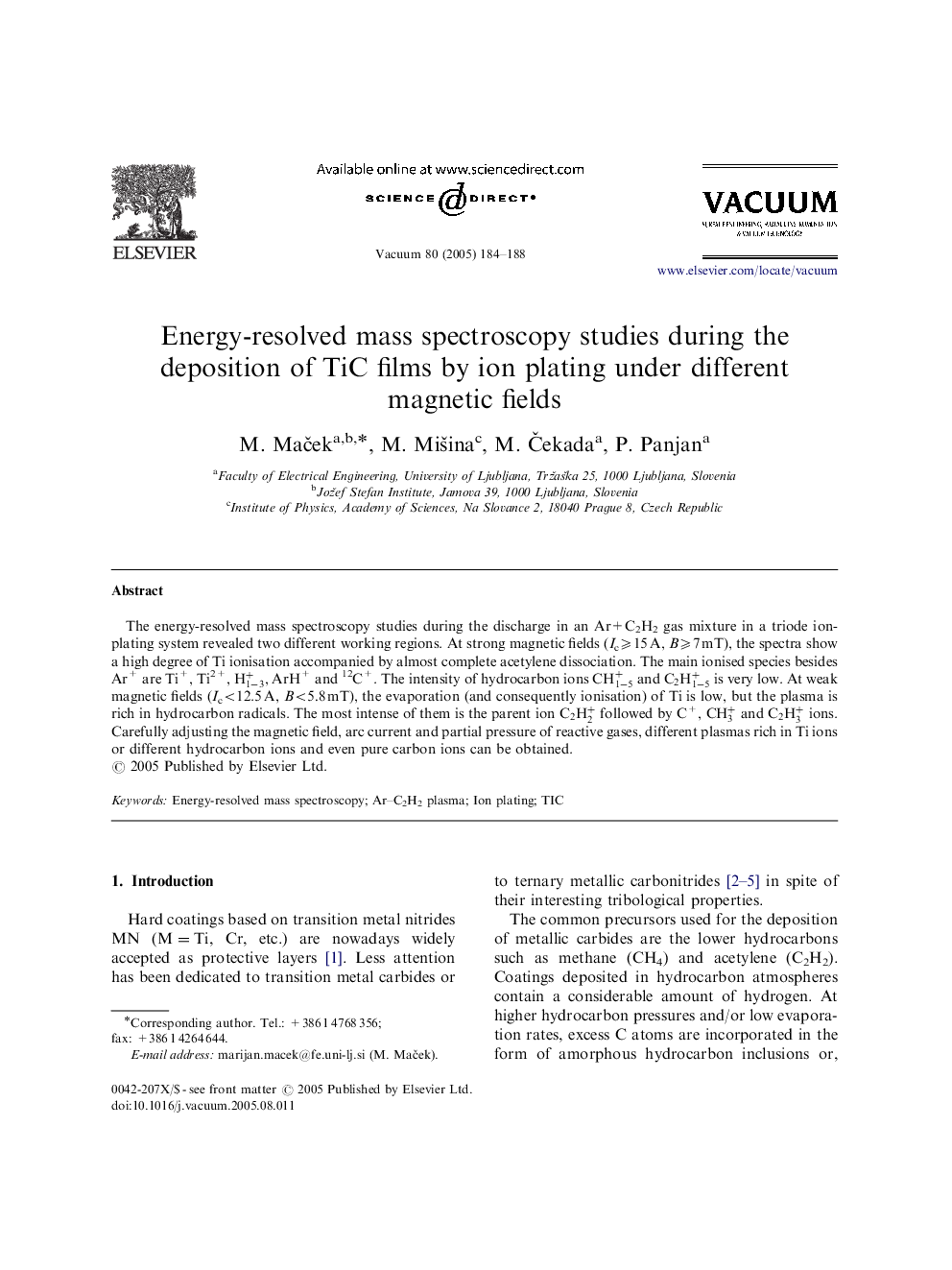| Article ID | Journal | Published Year | Pages | File Type |
|---|---|---|---|---|
| 9821502 | Vacuum | 2005 | 5 Pages |
Abstract
The energy-resolved mass spectroscopy studies during the discharge in an Ar+C2H2 gas mixture in a triode ion-plating system revealed two different working regions. At strong magnetic fields (Ic⩾15 A, B⩾7 mT), the spectra show a high degree of Ti ionisation accompanied by almost complete acetylene dissociation. The main ionised species besides Ar+ are Ti+, Ti2+, H1-3+, ArH+ and 12C+. The intensity of hydrocarbon ions CH1-5+ and C2H1-5+ is very low. At weak magnetic fields (Ic<12.5 A, B<5.8mT), the evaporation (and consequently ionisation) of Ti is low, but the plasma is rich in hydrocarbon radicals. The most intense of them is the parent ion C2H2+ followed by C+, CH3+ and C2H3+ ions. Carefully adjusting the magnetic field, arc current and partial pressure of reactive gases, different plasmas rich in Ti ions or different hydrocarbon ions and even pure carbon ions can be obtained.
Keywords
Related Topics
Physical Sciences and Engineering
Materials Science
Surfaces, Coatings and Films
Authors
M. MaÄek, M. MiÅ¡ina, M. Äekada, P. Panjan,
